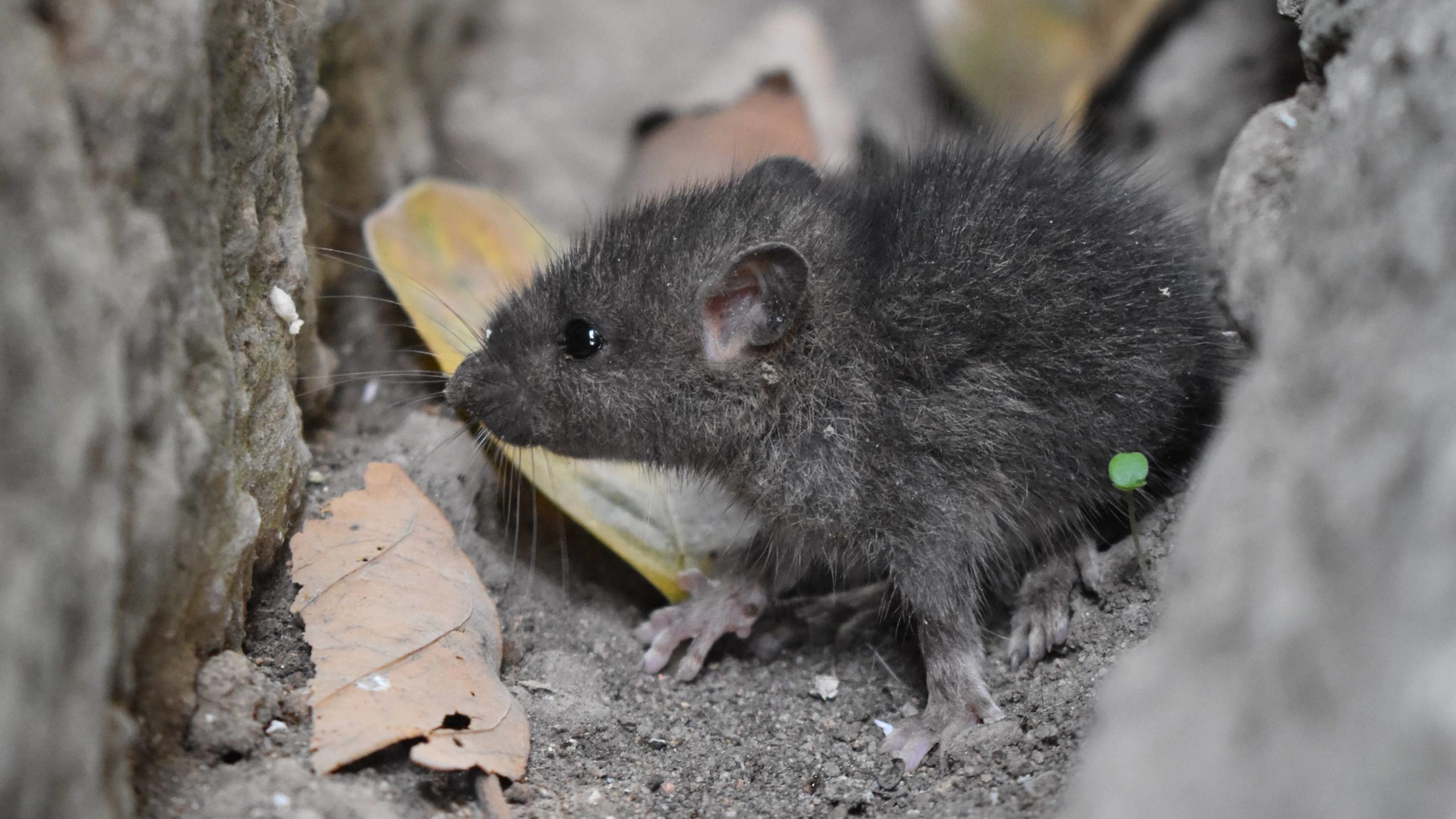Do not be fooled by their cute and fuzzy faces: Mice are not creatures you want in your house. It’s one thing to see a little field mouse scurry down a path in a park, and another thing entirely when they’re chewing your furniture, leaving droppings all over the kitchen or gnawing electrical wirings in your walls. Not to mention that rodents in general are harbingers of many diseases. They’re also clever, resourceful and difficult to get rid of.
My parents’ house has recently become the unfortunate host to these abominable critters, so we’ve been dealing with this nightmare first-hand. The experience has taught me that any home can become potential nesting grounds for rodents. They’re just looking for a safe spot that offers warmth and food. While that’s great for them, it’s frustrating and unsanitary for us. Here’s what to do about it.
Confirm that you have a mouse problem
Mice are like tiny, four-legged ninjas who make themselves scarce, but when you have a potential rodent problem, you might spot one scampering away out of the corner of your eye. Once you see one inside your house, you should immediately suspect you have a nest somewhere ” in your walls, in the attic, in the garage, wherever.
Most people don’t even realise they have mice until things get really bad. The most obvious signs of a mouse problem are droppings, which look like this. (I’ll never look at chocolate sprinkles or caraway seeds the same way again.) Though it’s temping to just wipe them up, make sure you take extra safety precautions when doing so, such as wearing gloves and a mask. Disinfect the area afterward, and throw away food that might’ve been contaminated. The last thing you want is to get sick at the same time you discover an infestation.
You may also find chewed up food packages or pieces of your wall at floor level from the mice having drilled through them. You may hear scratching in your walls or attic or the pitter-patter of tiny little feet at night. And if all that isn’t gross enough, you may also find pillars comprised of body grease, dirt and urine, which build up into small mounds up to two inches high and half an inch wide. And yes, they smell bad.
Any or all of these signs means you’ve got a potential infestation on your hands. The good news is that getting rid of mice is simple in principle. The bad news is that it could take a lot of work or money.
Start by “mouse-proofing” your home

Getting rid of mice is not easy. Mice entered your home because it’s cosy, has food in it and most of all, is easy to get into. Contrary to what you see in cartoons like Tom & Jerry, mice don’t need a gaping half-circle of a hole in your baseboard. They can squeeze through tiny cracks and gaps that are smaller than the circumference of your pinky finger. Basically, if you can fit a pencil into a hole, a mouse can probably fit, too. They are very skilled contortionists.
The first step is to inspect the outside of your home to find possible places mice can squeeze through. Check stairs, the foundation, the corners and any place that might hide small crevices. When you find anything that can possibly be an entryway, close it off with wire mesh. For inside the house, you can use steel wool and caulk to plug up any holes you find.
Mice can chew through practically any material except steel. In my experience, using a wire mesh wherever possible has been most effective. You’ll need to do this for anything resembling a hole. That includes cracks and gaps along the ceiling and even those high up on a wall. Just assume that these tenacious creatures can reach anywhere in your house.
Set traps around the house
As they say, the best offence is a solid defence. You’ve cut off all possible points of entry into your home to prevent more mice from getting in. Next you have to deal with the ones that are already nice and comfortable inside by setting traps. This part the cartoons got right, but mouse traps are a little more complicated than that. Here are a few things to consider:
- Type of trap: Typically, you’ll choose between a sticky or a spring-loaded lethal trap. My parents and relatives have had success with sticky traps, but the traditional Victor snap trap seems to be quite reliable for others. The CDC, however, recommends against the sticky traps because the mouse will be left alive and may urinate out of fear, and mice urine can spread disease. If you are a softie, you can also investigate no-kill “humane” traps.
- Type of bait: Once article by How to Get Rid of Mice goes over the various kinds of bait and other general tips and strategies for baiting and trapping mice.
- The location and position of the trap: Where you place the traps is vital. Mice are actually very careful and clever creatures. The CDC recommends placing traps perpendicular to a wall (forming 0 T). Try laying traps where you think there’s a lot of mouse activity, like behind large pieces of furniture and dark places.
If your traps haven’t caught anything in many days and you still see signs of mice, there are two possible reasons: First, traps are only helpful in eliminating the shitheads that are already in your home, and won’t do anything to deter more from coming in if you have yet to properly seal up entry points from the outside. The second thing is that you sometimes have to move the traps around to different places, as mice try to avoid traps, especially if you’ve caught a mouse in the same area before.
When you should call a professional
You can only hold off on calling a professional for so long. Sure, you can try to find every single hole, then plug them up and trap the remaining mice, but the real question is: Is doing so worth risking your energy, sanity and, most importantly, your health?
This was the mistake my parents made. They wasted a lot of energy, unnecessary backaches and money on various DIY methods and expensive mouse repellents that simply don’t work. At the same time, rodent control professionals can cost anywhere between $150 to $1,000. This obviously depends on the company, the size of your house, what the service entails and the severity of the rodent invasion. I shopped around and had several exterminators come out to assess the situation; I asked questions like how they’re going to deal with the mice and if there’s a mouse-elimination guarantee, or at least the possibility of followup visits, if necessary.
Before you call a professional, make sure they specialise in dealing with rodents specifically, and ask about their success rate. Most professionals should do a thorough inspection of the outside of your home to see where the mice might be getting in. This article goes over some great tips on finding and talking to a professional.
Be wary of companies that recommend poison from the get-go. It may be initially effective, but it doesn’t guarantee success. It might kill off the mice (and other things, sadly ” if you choose to use poison, you must be careful to safeguard your own pets, and be aware that it could kill neighbourhood animals and other wildlife around your home), but that means you might wind up with rotting mouse carcasses around your home, in your walls, under the floor or in the attic.
No, the only tried-and-true way to evict these freeloaders is to prevent them from entering your home in the first place. A good company will offer to keep coming back out to check if the infestation has been resolved.
Even after a professional has visited, a mouse infestation isn’t a problem that goes away overnight. However, if you don’t find fresh droppings after a week of watching and waiting, it’s a good sign your furry guests are taking their leave. To reduce the likelihood they’ll visit again, always make sure you tidy up, avoid leaving garbage out and keep your food in airtight containers.
This story was originally published in September 2016 and updated in August 2020. Updates included checking and refreshing links and performing a copy edit to align the content with current Lifehacker style.Â

Comments
One response to “What to Do When Mice Have Invaded Your Home”
Don’t use sticky traps, they are cruel and banned in many countries because of this, and are illegal in Australia except for use by licensed pest controllers, and then only as a last resort. Stores like the cheap $2 types stores that are selling them are doing so illegally.
If you use a sticky trap, what are you going to do with the mouse once you’ve caught it, throw it in the bin to die a slow death from dehydration? If you did that to a dog, you would be charged with animal cruelty, but doing it to a mouse is ok?
If you must kill them, and let’s face it, mice can breed so fast that killing is the only way to control them sometimes, then use rapid methods like electronic stunning killers or snap traps, death is pretty much instant in most cases, far better than the slow, torturous death of sticky traps.
Honestly, it amazes me that people still use methods like sticky traps.